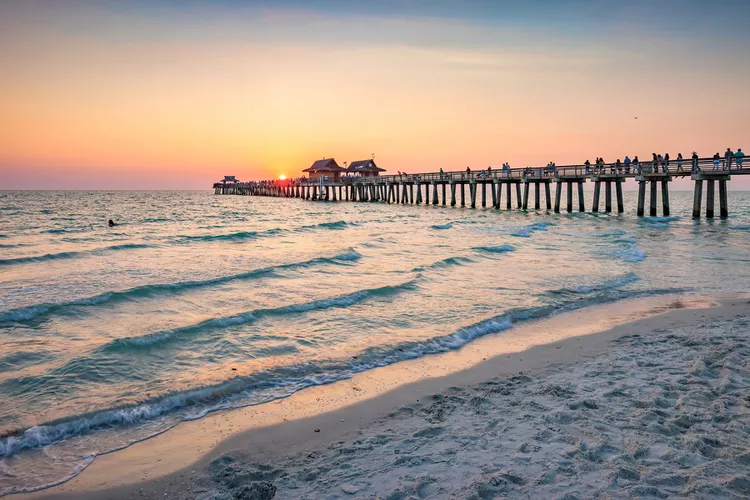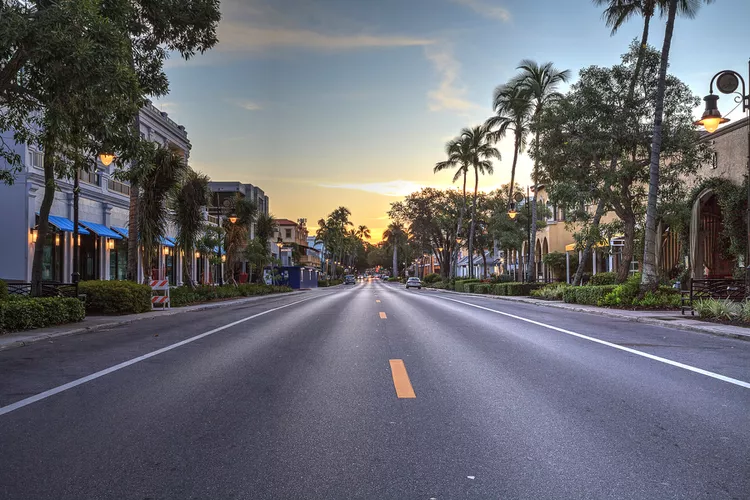Naples has always been popular with vacationers and second-home buyers seeking a fun, family-friendly environment in the Sunshine State. Known for its fantastic white sand beaches and world-class golf courses, this city on the Gulf of Mexico is also becoming a significant luxury destination for investment and living. Since 2015, the city has been part of the Blue Zone Project, which works to make communities across the country healthier and happier. Since then, East Naples has seen the most significant improvement in Southwest Florida, with a 6.7 percent increase since the program began.

“Once you move to Naples, you can be 10 years younger,” joked Ardel McKenna, a real estate associate with Coldwell Banker, pointing out some of the city’s major recreational offerings, such as sailing, fishing, and nearly 90 golf courses. “If you want to go outdoors, it’s the best place in the world because it’s always sunny.”
With more and more people working remotely, Naples has quickly become the primary residence for many city dwellers relocating from cities like Chicago and New York. In fact, according to a recent survey by U.S. News & World Report, it now holds the title of the safest place to live. It is one of the fastest-growing cities in the United States, attracting retirees and young couples. In 2021, Naples had the highest per capita home sales of any mid-size market in the United States, with average home prices soaring by $200,000 (more than 30%) year over year. In June 2022, the median home price in the city was $739,000.

“The average age of our buyers now is 42. (Naples) is very dynamic. There are restaurants, nightlife and lots of interesting things to do there. There’s always something new on the horizon in Naples, “Dawn McKenna, a Coldwell Banker agent specializing in luxury real estate, told T+L. “We’re probably closest to Palm Beach from a real estate perspective. The difference is that Palm Beach Island is walkable, like everything in Naples. However, Palm Beach Island is very small and becomes very dense when you go to West Palm Beach. Naples is bigger and doesn’t have that.”
The lower population density relative to traditional luxury markets like Miami or Palm Beach is just one factor that makes Naples a more attractive destination. Naples Municipal Airport (APF) is only 10 minutes from the city center. It serves private and charter flights (it is one of only three private airports in the country to see increased activity in 2020). Naples’ Fifth Avenue South and Waterside stores have some of the best designer shopping, and new luxury developments are popping up across the city.
Four Seasons is launching the Four Seasons Resort Naples Beach Club for the first time on the Gulf Coast. This sprawling 125-acre community will include a 216-room hotel and 185 luxury residences. Designed by Hart Howerton and Champalimaud Design, the hotel is expected to open in 2024. Bay of Calia, with five high-rise towers in North Naples offering gorgeous views of the Gulf of Mexico, an open-air gym, several swimming pools, and tennis courts, among many other amenities, features three – and four-bedroom fully furnished residences. Most of the condos in Kalea Bay have been on the market for two years, and residents will finally move in this fall.

In May, Rosewood Hotels & Resorts announced that it will build its second Rosewood Residences in the heart of Naples, Florida. The 50-unit development will have 500 feet of waterfront, ocean views, and concierge facilities. The three—and four-bedroom homes average 5,300 square feet of interior space. They feature a private elevator entrance, spacious balconies, large walk-in closets, and custom kitchens.
Home sales in the area are also booming. Last month, a 16,000-square-foot beachfront home sold for $62 million, making it the most expensive single-family home in Naples and breaking the previous high price record with a $10 million price tag. The liveliest neighborhoods in the city today are Port Royal, Old Naples, and the Aquaran Coast.
“The demand for real estate in Naples will never go away,” concludes Adel McKenna. “It’s getting bigger. Rising interest rates or a stabilizing stock market will never reduce demand for Naples.”
